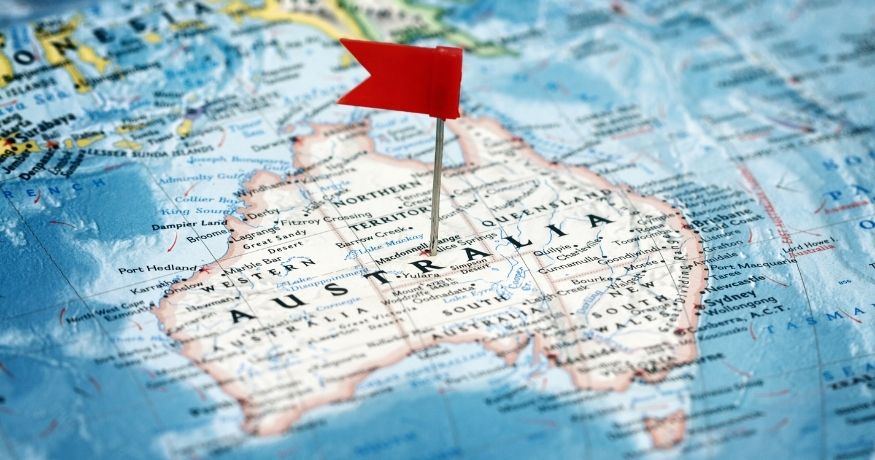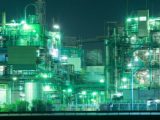
BP points to Australia as a top green hydrogen production location
August 13, 2021The energy giant looked specifically to Western Australia as a place with potential to scale up.
BP announced this week that Australia is a very promising location for scaling up green hydrogen production and green ammonia production.
The energy giant stated that H2 made with renewable energy was now technically feasible at scale.
BP’s conclusion that Australia could now handle green hydrogen production at scale was based on a feasibility study’s findings. It was conducted in May 2020 and is supported by the Australian Renewable Energy Agency, the GHD Advisory professional services firm, and the Lightsource bp solar developer.
The energy major released a statement pointing to Western Australia as “an ideal place” for developing “large scale renewable energy assets that can in turn produce green hydrogen and/or green ammonia for domestic and export markets,” as quoted by a CNBC report.
The International Energy Agency described H2 as a “versatile energy carrier” and can be used for a wide spectrum of applications in a broad number of sectors such as transport and industry.
According to BP green hydrogen production is feasible, as is using it to make ammonia as a “hydrogen carrier”.
Green ammonia could be made by combining nitrogen from the air with H2 produced using renewable energy. This ammonia could be used as an H2 carrier, said BP’s statement.
The company’s report was prepared by GHD Advisory. It described its examination as looking at the hydrogen supply chain and domestic and export markets” at various scales. These included a pilot plant with a 4,000 metric ton H2 generation capacity and a 20,000 metric ton ammonia production capacity, and a commercial scale facility with a 200,000-ton H2 capacity and 1 million ton ammonia capacity.
The study’s findings were a confirmation of “the potential for scaled-up green hydrogen in Western Australia,” said BP Australia President Frédéric Baudry. “This looks particularly promising in the mid-west of WA, which has existing infrastructure, access to land and abundant renewable energy resources such as wind and solar.”
This more than likely comes as great news to the country, which has been making ambitious moves in green hydrogen production in the hopes of becoming a world leader in this renewable energy.



 With over 15 years of reporting hydrogen news, we are your premier source for the latest updates and insights in hydrogen and renewable energy.
With over 15 years of reporting hydrogen news, we are your premier source for the latest updates and insights in hydrogen and renewable energy.
Production of Green Hydrogen from wind/solar farms in Western Australia to then transport to distant industrial sites using hydrogen or hydrogen filling stations? Hydrolysis of water is expensive. Long distance transport of hydrogen is expensive and dangerous. Better idea. Develop organic waste sites (farms waste, landfills, municipal waste, food waste) to produce biogas. Convert the biogas to produce Renewable Natural Gas. RNG is more “carbon negative” than renewable electricity due to the capture of biogas that is otherwise released to the atmosphere. At 2 million dollars a pop for wind turbines, RNG is cheaper to produce. RNG can be stored and shipped in the present natural gas infrastructure. Green Hydrogen can be produced “on site” from RNG with HyGEAR technology. This requires only a short transport of Green Hydrogen from the HyGEAR unit to the filling station or industrial user of hydrogen. Much more economical than electrolysis of water with Renewable Electricity. It’s not rocket science.
2 million dollars a pop for wind turbines, doesn’t say anything about the cost of hydrogen produced by electrolysis (not hydrolysis). Try using some x, -, + and /’s. “And transportation is expensive” is also uncalibrated.
Biohydrogen production cannot approach current usage and is well distributed. The US states of Texas and North Dakota vent or flares 2.5 billion cubic feet of natural gas per day, because the cost of transporting that very distributed resource to market is too high to be profitable. Concentration is very important in determining the cost of transportation. My bananas are shipped profitably from brazil 1/2 way across the planet. Actual transportation dynamics may surprise you.
Western Australia is already the location for very interesting new hydrogen technologies such as the Hazer process where a plant is being constructed in Perth to take biomethane and crack it into hydrogen and high grade graphite. Organic waste should be processed in anaerobic digesters to capture the methane and use it as an energy source, for example powering solid oxide fuel cells that can produce green electricity rather than burning it which produces harmful NOx. Green hydrogen produced by high temperature steam electrolysis using waste steam drops the cost of hydrogen as the energy of the steam contributes to the total energy needed to split hydrogen from oxygen.
So, with your unique insight into the future of green hydrogen, is there anyone in the company who might suggest a good investment for my portfolio, as I believe this is the energy winner to make us carbon neutral going forward.
Kind regards
Stewart Mears